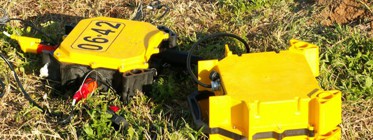Sigma and high bandwidth real time data using SRD hyMesh
A number of cableless seismic systems claim that they provide real time communications. But when it comes to working without telemetry cables what does "real time" really imply? In some cases, it turns out not to mean what some think it means.
In cabled based acquisition the definition of "real time" is unambiguous. It is the transmission of both seismic HIGH BANDWIDTH DATA and STATUS (e.g. system health, QC, noise monitoring etc.) from ALL deployed grounds units with virtually NO DELAY. However, to avoid disappointment, potential users of cableless seismic systems should seek clarification in respect of each of these highlighted items.
The issue for all non-shootblind cableless instruments is their reliance on the only internationally acceptable radio transmission frequency - the "2.4 GHz ISM band" (2.4000 - 2.4835 GHz) with power restricted in most countries to 100 mW EIRP or less. This radio frequency is readily absorbed by water molecules (see iSeis document "2.4 GHz Issues" at www.iseis.com/html/documents) and transmitting high bandwidth data over any useful range without appropriate antenna and careful deployment, especially in areas of dense vegetation, may well conflict with the laws of physics.
With all radio transmission there is a trade-off between range, bandwidth and ease of set up. Therefore, in cableless seismic data acquisition using the 2.4 GHz ISM band, the sort of questions which must be answered include:
- For even minimal assured communications in all environments, what type of deployment is typical for each recorder, i.e. what set up effort is involved?
- To improve flexibility and reliability of communication, does the instrument permit multi-path (mesh topology) or only point to point?
- Is it possible or necessary to use directional or external antenna?
- How high above ground must these antenna be deployed?
- What bandwidth can be expected with each set-up?
- What radio range can be expected between two adjacent units which must form part of the communication path?
- What transmission delays are there between ground units acquiring data and it being received by the observer, and how is this affected by obstructions?
- What happens if the communication path is broken - does the system effectively cease to function, or does it default to an autonomous shootblind configuration?
iSeis already addresses these questions. For example, the basic Sigma cableless system comes complete with a Mesh Radio Network (MRN) capability, see www.iseis.com/html/sigma/mesh-radio-network. No other cableless recorders offer any MRN functionality, yet its great advantages include ease of set-up and communication which is virtually assured in the toughest seismic environments.
Even using the simplest "drop and go" deployment routines, Sigma's MRN has been field-proven in jungles, areas of rapid elevation changes, across water bodies (salt and fresh water) through towns, villages and cities with high levels of interference. External MRN repeater antenna, if required (for example for data re-routing, extra levels of security monitoring etc.) are just as simple to deploy.
MRN bandwidth is sufficient to allow two way communications with all deployed units and the central system(s) transmitting everything one would normally expect with a modern cable system with the exception of the seismic data itself.
While the advantages of Sigma MRN include useful levels of radio range and very simple deployment it should be understood, just as with all cableless systems with in-built communications, that there is a compromise. In the case of Sigma's MRN it is in terms of bandwidth. It is sufficient to send QC, health (battery, sensors, GPS reception, security, instrument test and noise data) but is insufficient to support real time transmission of the full seismic reflection record. Here, to comply with the laws of physics, great ease of use and guaranteed comms has been traded off for high bandwidth.
But for operators who require higher the highest radio data rates, additional equipment is available with Sigma and can be employed simply. Whether choosing just a few hundred QC channels out of a much larger spread for high bandwidth comms, or ten thousand channels, the extra hardware takes the form of an optional Mesh Wifi Network, developed by SRD in Calgary, called hyMesh.
hyMesh is a patented high bandwidth mesh network solution which simply plugs into the Ethernet port of the standard Sigma ground unit. This enables real-time wireless transmission of everything including the full seismic data files even in difficult environments where other technologies fail.
In order to make sure the crew can continue to make the best compromise between deployment effort and bandwidth, different hyMesh antennae can be chosen depending on absorption characteristics of the environment. For open ground, only short antennae are needed but as vegetation density increases it is possible to move to metre-tall antennae or, in the thickest forest, antenna of 1.8m may need to be used. See photos.
Clearly, all crews needing high bandwidth data will still want to operate with the lowest levels of deployment effort. One of hyMesh's advantages is that it is at last possible to select the right antenna for the job, not being forced to use one too small to work reliably, or too large to be too cumbersome for the task in hand.
Sigma with SRD's hyMesh is the only field-proven cableless system able to work in the world's toughest land and shallow water environments. It is an option available for the basic Sigma3 system which can be purchase with the system or as an add-on at any time.
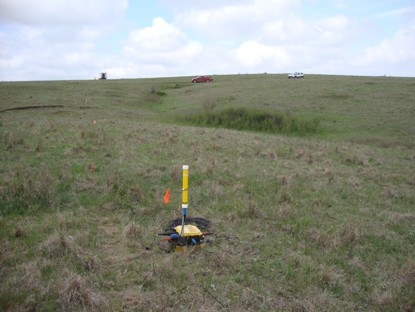 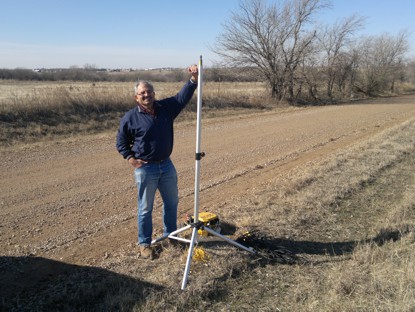 |
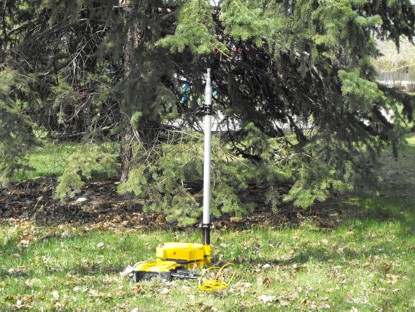 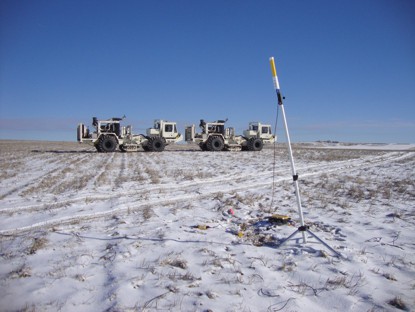 |
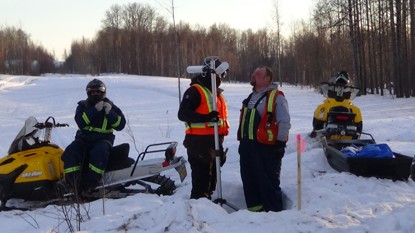 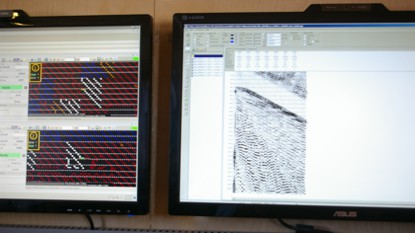 |

